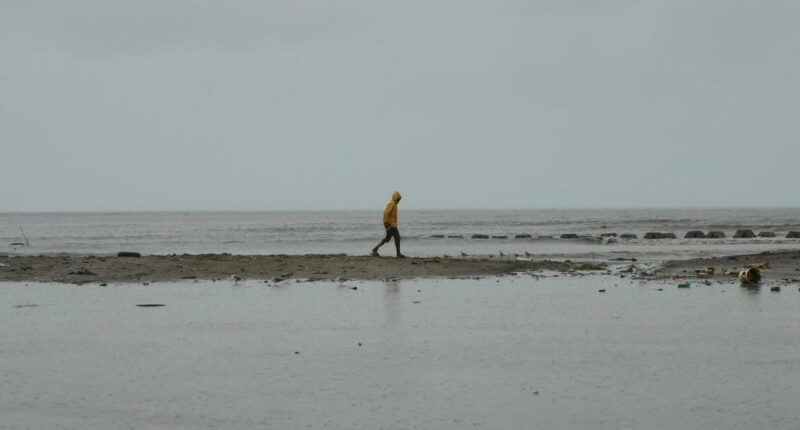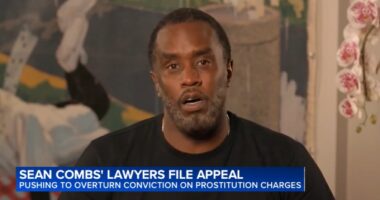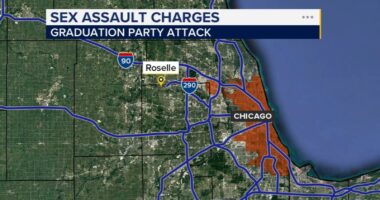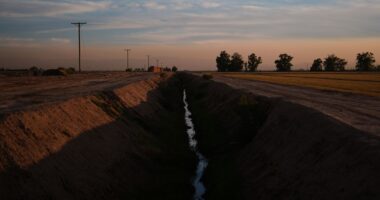Share this @internewscast.com
By JOHN MYERS JR. and DÁNICA COTO, Associated Press
KINGSTON, Jamaica (AP) — On Tuesday, Hurricane Melissa, a formidable Category 5 storm, was poised to unleash its fury on Jamaica, marking the most powerful hurricane to strike the island in the 174 years of recorded history.

In anticipation of the hurricane’s arrival, the Jamaican authorities declared they had maximized their preparatory efforts, cautioning citizens about the potential for devastating damage. Kingston’s usually bustling streets were eerily quiet, save for the occasional stray dog navigating through puddles and a few individuals hurrying under the sway of wind-tossed branches.
“A Category 5 storm is beyond the capacity of any existing infrastructure here,” stated Prime Minister Andrew Holness. “Our focus now shifts to how swiftly we can recover. That presents a significant challenge.”
Forecasts indicate that the storm will make landfall on Tuesday, carving a path diagonally across Jamaica. Soon after, it is expected to impact Cuba.
Already, reports of landslides, toppled trees, and widespread power outages have emerged as officials in Jamaica warned that the process of cleanup and damage evaluation would be protracted. Meteorologists predict the hurricane will enter near St. Elizabeth parish in the south and continue its destructive course exiting around St. Ann parish in the north.
“Total structural failure is possible near the path of Melissa’s center,” the U.S. National Hurricane Center in Miami.
A life-threatening storm surge of up to 13 feet is expected across southern Jamaica, with officials concerned about the impact on some hospitals along the coastline. Health Minister Christopher Tufton said some patients were relocated from the ground floor to the second floor, “and (we) hope that will suffice for any surge that will take place.”
The storm already was blamed for seven deaths in the Caribbean, including three in Jamaica, three in Haiti and one in the Dominican Republic, where another person remains missing.
Jamaica braces for catastrophic damage
On Tuesday morning, Melissa was centered about 55 miles south-southeast of Negril, Jamaica, and about 265 miles southwest of Guantánamo, Cuba. The system had maximum sustained winds of 175 mph and was moving north-northeast at 7 mph, according to the U.S. National Hurricane Center in Miami.
“We will get through it together,” said Evan Thompson, principal director at Jamaica’s meteorological service.
Colin Bogle, a Mercy Corps advisor based near Kingston, said most families are sheltering in place despite the government ordering evacuations in flood-prone communities.

“Many have never experienced anything like this before, and the uncertainty is frightening,” he said. “There is profound fear of losing homes and livelihoods, of injury, and of displacement.”
Necephor Mghendi, the international Red Cross’ regional head of delegation for the English- and Dutch-speaking Caribbean, said that an estimated 1.5 million people in the storm’s path will be affected, but many others as well.
“The entire population may feel the impact one way or the other,” he said by video link from Port-of-Spain, Trinidad and Tobago.
U.N. agencies and dozens of nonprofits had food, medicine and other essential supplies prepositioned as they awaited a distribution rush after the storm.
Matthew Samuda, Jamaica’s water and environment minister, said he had more than 50 generators available to deploy after the storm, but warned people to set aside clean water and use it sparingly.
“Every drop will count,” he said.
Melissa takes aim at Cuba
Melissa also was expected to make landfall in eastern Cuba late Tuesday as a powerful hurricane.
A hurricane warning was in effect for Granma, Santiago de Cuba, Guantánamo and Holguin provinces, while a tropical storm warning was in effect for Las Tunas. Up to 20 inches (51 centimeters) of rain were forecast for parts of Cuba, along with a significant storm surge along the coast.
Cuban officials said Monday that they were evacuating more than 600,000 people from the region, including Santiago, the island’s second-largest city.
Melissa also has drenched the southern regions of Haiti and the Dominican Republic, with a tropical storm warning still in effect for Haiti.
The hurricane was forecast to turn northeast after Cuba and strike the southeast Bahamas by Wednesday evening.
A hurricane warning was in effect for the southeastern and central Bahamas, and a tropical storm warning was issued for the Turks and Caicos Islands.
Coto reported from San Juan, Puerto Rico. Geir Moulson in Berlin contributed.

















